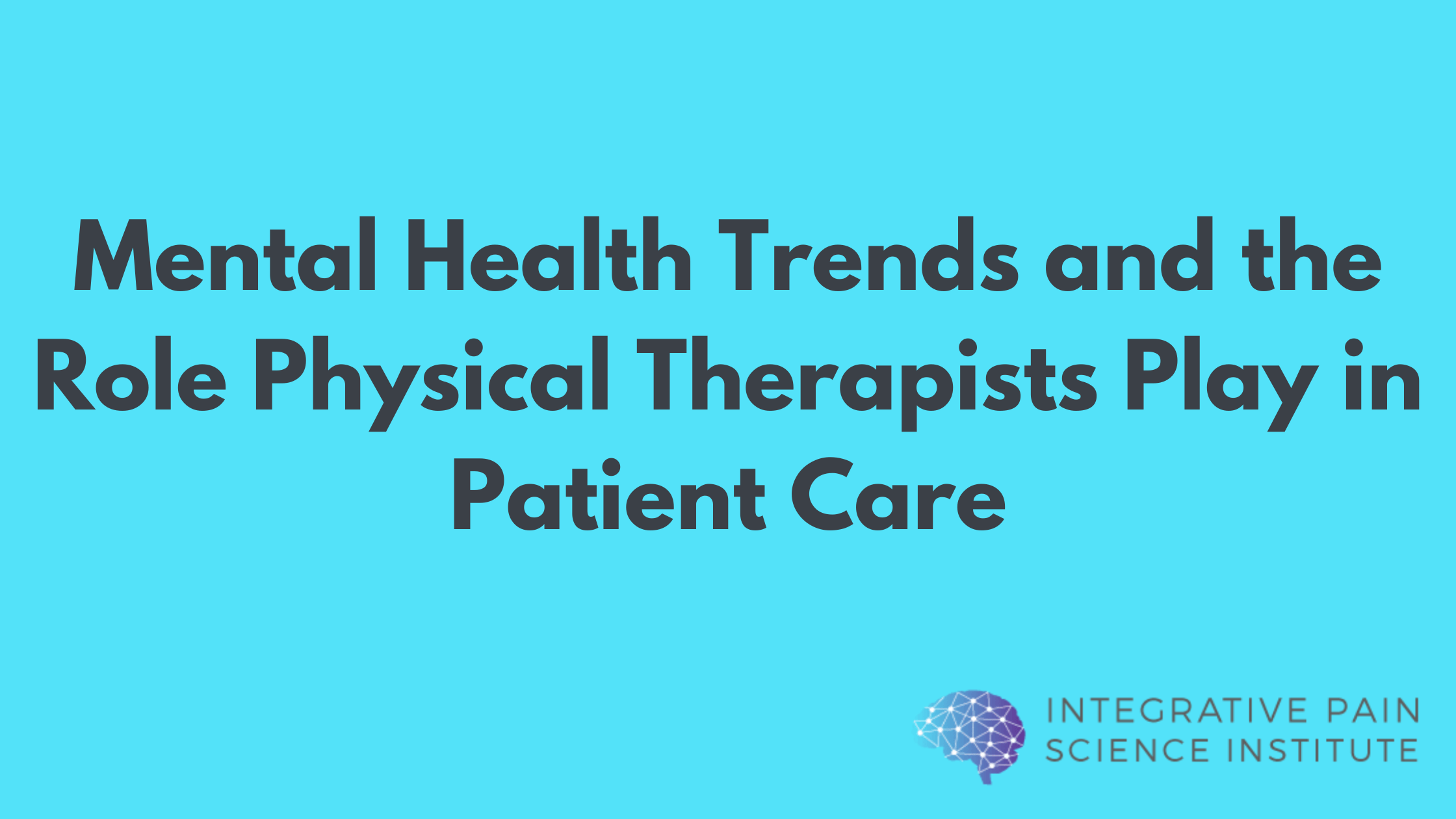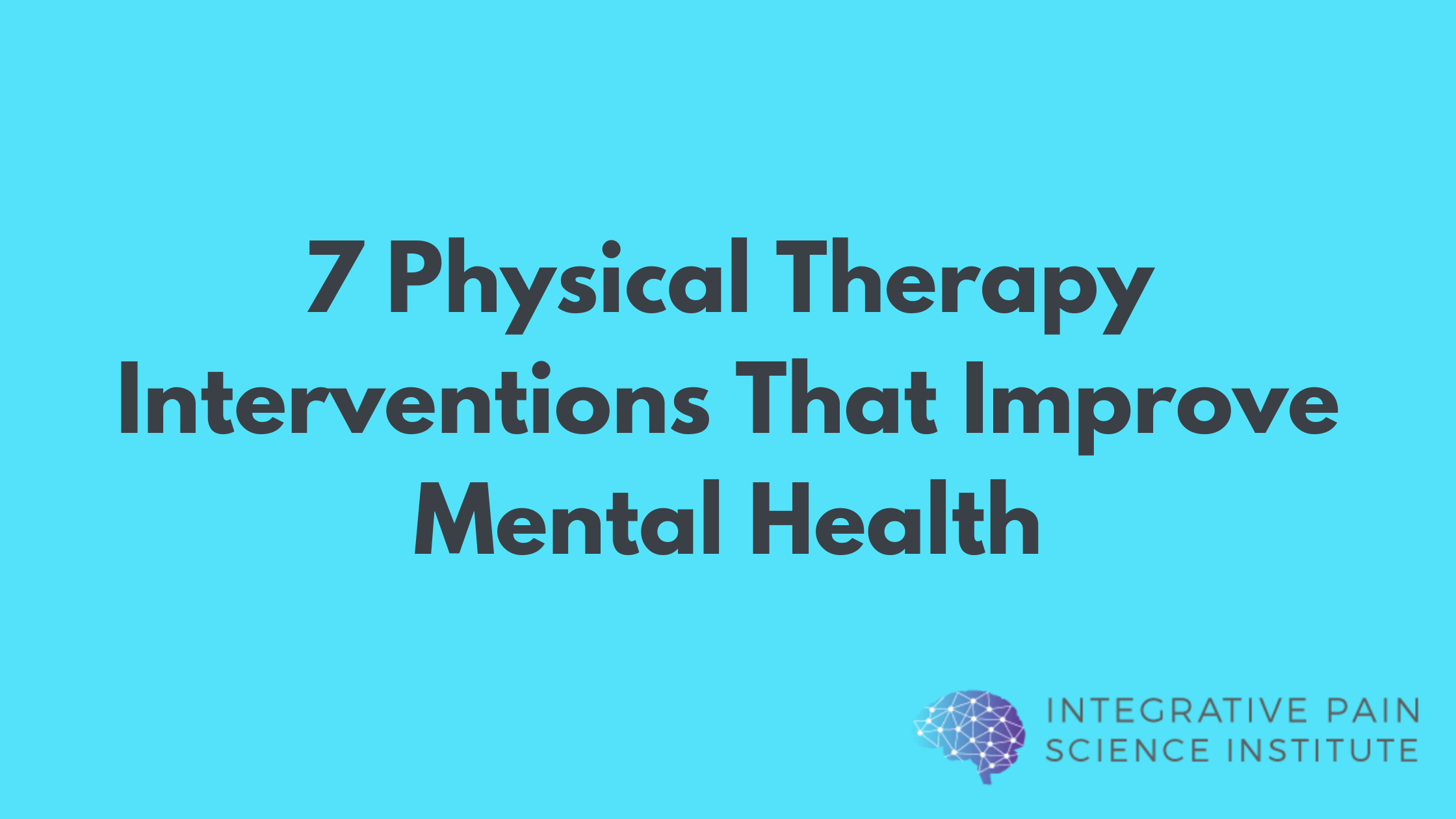Breaking the Silence: Diagnostic Overshadowing in Physical Therapy and Mental Health
By Joe Tatta, PT, DPT
Diagnostic overshadowing was initially used to describe a clinician’s tendency to assess individuals with an intellectual disability less accurately. Today the term is used more broadly. Diagnostic overshadowing refers to the negative bias impacting a clinician’s judgment regarding co-occurring physical and mental health conditions. This challenge exists across various healthcare disciplines, yet it is rarely discussed in the context of physical therapy and mental health care. In this post, we will explore how diagnostic overshadowing impacts physical therapy and mental health care, discuss how it can be prevented, and offer insights on improving patient outcomes through a whole-person approach.
What Is Diagnostic Overshadowing?
Diagnostic overshadowing occurs when a healthcare provider focuses so intently on one diagnosis that they overlook or minimize other potential diagnoses. This often happens when a patient presents with multiple conditions, and the most obvious or longstanding one takes precedence over others, or when providers lack knowledge and training. It can occur with patients of all ages and backgrounds, but certain individuals are at higher risk, including those with physical and cognitive disabilities, behavioral health disorders, and substance use disorders. This phenomenon can significantly hinder both physical therapy and mental health care, particularly when practitioners fail to screen for underlying psychological or physical issues.
For example, if a patient with a history of depression presents with unexplained fatigue, healthcare providers may attribute the fatigue solely to their mental health condition, potentially missing other underlying issues like poor nutrition or thyroid dysfunction. Similarly, in physical therapy, if a patient with chronic low back pain presents with new pain symptoms, a therapist might assume they are simply part of the chronic condition rather than exploring potential new injuries or psychosocial contributors.
Diagnostic Overshadowing in Physical Therapy
Overemphasis on Physical Symptoms
In physical therapy, diagnostic overshadowing occurs when a physical therapist focuses solely on the physical aspects of a patient’s condition, neglecting to consider psychological, emotional, or social contributors to the problem. This is particularly common in patients with chronic pain conditions like low back pain, fibromyalgia, or arthritis. These patients may present with physical symptoms, but psychological factors—such as anxiety, depression, or past trauma—may be a significant driver of their pain experience. This doesn’t mean that psychological factors are the sole cause of the chronic pain condition. However, it may indicate that overlooking them leads to less-than-optimal outcomes.
Physical therapists are trained to diagnose and treat painful neuro-musculoskeletal conditions, but they may not always screen for mental health concerns that can exacerbate or contribute to physical symptoms. Another example is anxiety in Parkinson’s disease frequently goes underdiagnosed and undertreated, and historically overshadowed in research by a focus on depression. Other examples include underappreciated psychological factors like fear-avoidance beliefs and catastrophizing are strongly associated with chronic pain and disability. When physical therapists focus only on biomechanical factors like muscle strength or joint mobility, they may overlook these critical psychosocial aspects, leading to suboptimal outcomes for the patient.
Missed Psychological Diagnoses
Here are five examples of diagnostic overshadowing in physical therapy, where physical symptoms are misattributed to a primary musculoskeletal diagnosis, leading to overlooked or delayed identification of psychological or other medical conditions:
1. Chronic Low Back Pain and Depression
A patient with chronic low back pain continues to experience worsening pain and disability despite months of physical therapy. The physical therapist focuses solely on treating the physical aspects of the pain—using manual therapy and exercises—without screening for underlying depression or anxiety, which may amplify the patient’s pain experience and hinder recovery. As a result, the psychological contributors to their pain remain unaddressed.
2. Neck Pain and PTSD
A patient with persistent neck pain after a car accident undergoes physical therapy, where the therapist focuses only on the mechanical issues—joint stiffness and muscle tightness. The therapist overlooks the possibility that the patient is experiencing post-traumatic stress disorder (PTSD) related to the car accident, which is contributing to muscle tension and pain. Without addressing the PTSD, the patient’s progress remains limited.
3. Knee Pain and Fear-Avoidance
A patient recovering from knee surgery exhibits a reluctance to perform exercises and reports persistent pain. The therapist assumes the pain is purely mechanical and continues increasing exercise intensity. However, the patient may be experiencing fear-avoidance behavior, a psychological factor where they fear movement due to the anticipation of pain or re-injury. Without recognizing and addressing this fear, the patient’s progress stalls, and their functional recovery is delayed.
This failure to recognize and treat mental health conditions can lead to prolonged recovery times, higher levels of disability, and increased healthcare costs. Moreover, it contributes to the patient feeling misunderstood or invalidated, as their emotional or psychological pain is not being acknowledged in their treatment plan.
Diagnostic Overshadowing in Mental Health Care
Overemphasis on Cognitive or Emotional Symptoms
On the flip side, diagnostic overshadowing is also common in mental health care when professionals focus primarily on cognitive or emotional symptoms without considering the patient’s physical health. The Institute for Health Metrics and Evaluation (IHME) indicates 13% of the world’s population has a mental illness. This large population bears heavy physical as well as psychological burdens. For instance, when a person with depression complains of physical symptoms like headaches, and muscle pain, or the mental health provider does not address or overlook physical decline, these may be attributed solely to their mental health diagnosis. However, these physical symptoms could be indicative of an underlying medical condition, such as a vitamin deficiency, autoimmune disorder, or cardiovascular disease.
Mental health professionals often focus on psychological interventions, such as cognitive-behavioral therapy (CBT) or medication, without addressing the physical components of a patient’s distress. This is problematic because many mental health conditions have physical manifestations, and treating the mind without considering the body can result in incomplete care. While the causes of diagnostic overshadowing are complex and multifaceted, mental health providers need to ensure that their practice is not a contributing factor, which requires ongoing self-reflection on their knowledge, skills, and attitudes. In many cases, referring to a physical therapist to address the physical or mind-body connection is missing from mental health care.
Missed Physical Diagnoses
There is growing evidence that mental health conditions like depression and anxiety are often linked to physical health problems, such as heart disease, diabetes, and chronic pain. They may also be linked to a steady decrease in overall physical function. A study published in The Lancet found that individuals with depression are at a significantly higher risk of developing physical health issues, including cardiovascular diseases and musculoskeletal disorders. However, when mental health professionals focus exclusively on the cognitive aspects of the disorder, these physical health risks may go unnoticed, leading to delayed diagnosis and treatment.
Here are five examples of diagnostic overshadowing in mental health, where physical symptoms are mistakenly attributed to mental health conditions, leading to missed or delayed diagnoses of underlying medical issues:
1. Depression with Chronic Low Back Pain
A patient with moderate depression continues to experience worsening lower back pain and disability despite months of psychotherapy. The mental health provider focuses solely on treating the cognitive aspects of the person’s depression —using traditional cognitive behavioral therapy. The patient has received care without screening for underlying physical factors, which may be amplifying the patient’s pain experience and hindering recovery. The mental health provider notices that the person is not improving and refers them to a psychiatrist for antidepressant medication management. The psychiatrist does not perform a physical examination or refer to a physical therapist. As a result, the physical contributors to their pain and depression remain unaddressed.
2. Chronic Fatigue in Depression
A patient presents with persistent fatigue and low energy. Because they have a history of major depressive disorder, the healthcare provider attributes their fatigue to depression without investigating potential physical causes such as poor diet, thyroid dysfunction, anemia, or sleep apnea. This results in a missed diagnosis and ongoing fatigue that could have been treated with appropriate medical interventions.
3. Muscle Aches in Bipolar Disorder
A patient with bipolar disorder reports chronic muscle aches. The clinician attributes the physical discomfort to psychomotor agitation or medication side effects from mood stabilizers, without considering other medical causes such as fibromyalgia, autoimmune diseases (e.g., lupus), or the significant impact of progressive sedentary behaviours. This results in the patient’s physical symptoms being overlooked and improperly treated.
In each of these examples, diagnostic overshadowing occurs because the mental health provider attributes new or worsening physical symptoms to the patient’s pre-existing mental health diagnosis without fully considering other possible medical explanations.
The Intersection of Physical Therapy and Mental Health
The Importance of a Whole-Person Approach
Diagnostic overshadowing highlights the critical need for a whole-person approach to care, particularly in the fields of physical therapy and mental health. For patients experiencing chronic pain, both physical and psychological factors often contribute to their condition, and addressing only one aspect is unlikely to result in full recovery.
Research supports the notion that integrating mental health care into physical therapy can improve patient outcomes. A study in the Journal of Physical Therapy and Rehabilitation suggested a model called PRISM: Pain Recovery and Integrative Systems Model as a cognitive behavioral approach for physical therapy. Although aimed at pain management the model also has applications for physical therapists to address mental health using low-moderate psychologically informed care. Patients who receive psychologically informed physical therapy generally experience greater reductions in pain and disability compared to those who received standard care. These interventions also prevent the transition from acute pain to chronic pain. PIPT incorporates cognitive-behavioral techniques, mindfulness, and emotional support into traditional physical therapy practices, helping patients address both the physical and psychological aspects of their condition.
The Role of Physical Therapists in Mental Health
To prevent diagnostic overshadowing, physical therapists should be trained to screen for and address mental health conditions as part of their routine practice. This is not only for the physical therapist working in chronic pain. It is for every physical therapy setting and specialty practice area. This is well within our scope of practice and is increasingly recognized as a necessary component of patient care. The American Physical Therapy Association (APTA) has issued practice advisories to physical therapists to screen for depression, anxiety, and other mental health conditions, particularly in patients with chronic pain, as these psychological factors can significantly influence treatment outcomes.
For a comprehensive overview of the physical therapist’s role in mental health, refer to the earlier blog post, The Physical Therapist’s Role in Behavioral and Mental Health.
Incorporating mental health screening into physical therapy can also help differentiate between physical and psychological causes of symptoms, enabling more accurate diagnoses and better-targeted interventions. For example, a patient with chronic pain may also be experiencing PTSD, which can exacerbate their symptoms. By identifying and addressing the PTSD, the therapist can help the patient manage both conditions more effectively, improving their overall quality of life.
Preventing Diagnostic Overshadowing through Psychologically Informed Physical Therapy
When physical therapists are psychologically informed, they are better equipped to prevent diagnostic overshadowing and improve patient outcomes. Psychologically informed physical therapy involves understanding the mental and emotional components of pain, recognizing the role of psychosocial factors in recovery, and integrating mental health care into treatment plans. By adopting this approach, PTs can ensure that they are treating the whole person, not just their physical symptoms.
This is why it is crucial for physical therapists to understand the differential diagnosis of mental health conditions and be active members of primary mental health care teams. As part of the diagnostic process, PTs can provide valuable insights into how physical and psychological factors interact, leading to more accurate diagnoses and comprehensive care for patients. With the growing recognition of mental health as an integral part of overall well-being, this holistic approach is becoming an essential part of modern healthcare.



